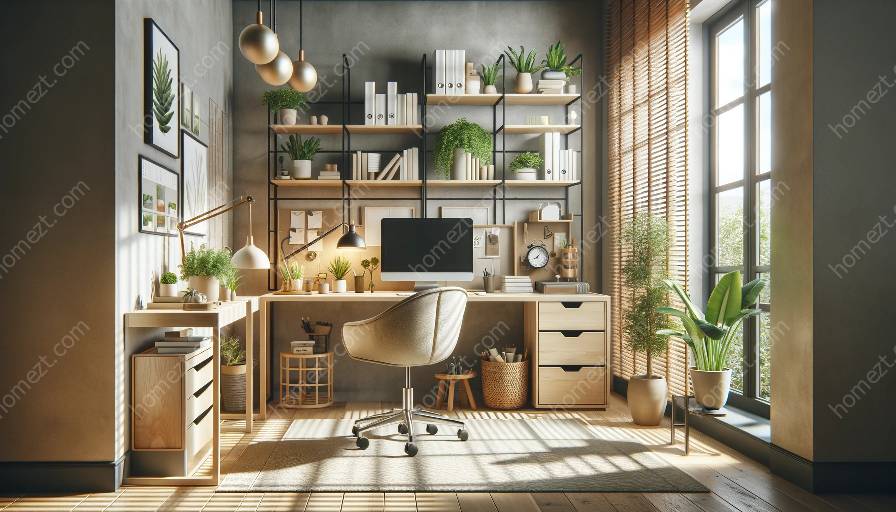In today’s fast-paced and digitally-driven world, working from home has become increasingly common. As such, it’s essential to create a productive and harmonious work environment. One way to achieve this is by incorporating the principles of feng shui into your home office design. The concept of feng shui involves arranging the physical environment to create balance and harmony, allowing for better energy flow and increased well-being.
Understanding Feng Shui
Feng shui, which translates to “wind-water” in English, is an ancient Chinese practice that focuses on the arrangement of elements to create balance and harmony within a space. By incorporating feng shui principles into your home office design, you can create an environment that supports productivity, creativity, and overall well-being.
The Bagua Map
One of the key tools in feng shui is the bagua map, which divides a space into nine areas, each corresponding to different aspects of life, such as wealth, health, and relationships. By applying the bagua map to your home office, you can identify the areas that correspond to your work, creativity, and career aspirations, and then make design adjustments to optimize these areas for better energy flow.
Key Feng Shui Principles for Home Office Design
Here are some key feng shui principles that can be applied to home office design for better energy flow:
- Decluttering: A clutter-free environment is essential for good energy flow. Keep your workspace tidy and organized to promote clarity and focus.
- Natural Light: Incorporating natural light into your home office design can uplift the energy in the space and enhance your mood and productivity.
- Positioning of Furniture: Place your desk in the power position, which allows you to see the door while seated. This positioning fosters a sense of security and control, promoting confidence and focus.
- Use of Color: Choose colors that promote the energy you want to cultivate in your home office. For example, calming blues and greens can encourage tranquility and creativity, while vibrant reds and oranges can energize and motivate.
- Plants and Nature Elements: Bringing elements of nature, such as plants, into your home office can enhance the flow of positive energy and create a sense of vitality and growth.
- Personalizing Your Space: Incorporate personal items that inspire and motivate you, such as artwork, photos, or meaningful objects. Surrounding yourself with positive reminders can create a supportive and uplifting work environment.
Integrating Feng Shui with Practical Design
While the principles of feng shui can greatly influence the energy flow in your home office, it’s important to also consider practical design elements that contribute to a functional workspace. Ergonomic furniture, adequate storage solutions, and proper lighting are essential components of an effective home office design. By integrating feng shui principles with practical design considerations, you can create a space that not only supports positive energy flow but also meets your specific work needs.
Creating a Harmonious and Productive Home Office
By incorporating the concept of feng shui into your home office design, you can create a space that promotes balance, harmony, and productivity. Whether you’re designing a dedicated home office or a study room within your living space, the principles of feng shui offer valuable insights into optimizing the energy flow for a fulfilling work environment. By aligning the physical elements of your home office with the underlying principles of feng shui, you can cultivate a space that supports your work goals and enhances your overall well-being.
With a thoughtful approach to home office design that integrates feng shui principles, you can create a space where positive energy flows freely, allowing you to thrive in your work and personal pursuits.


























